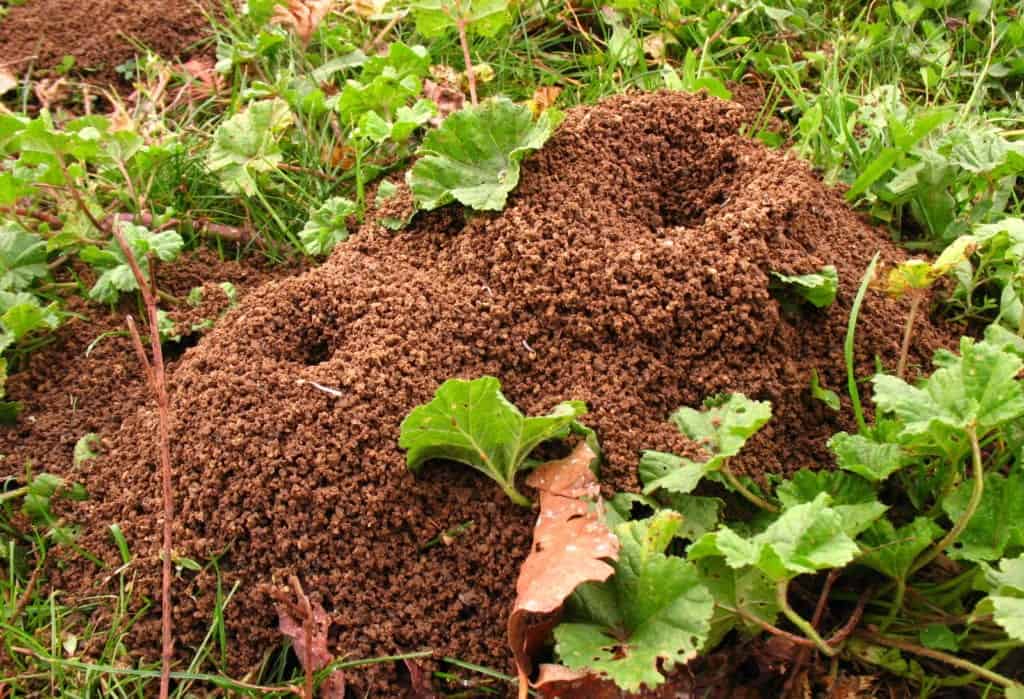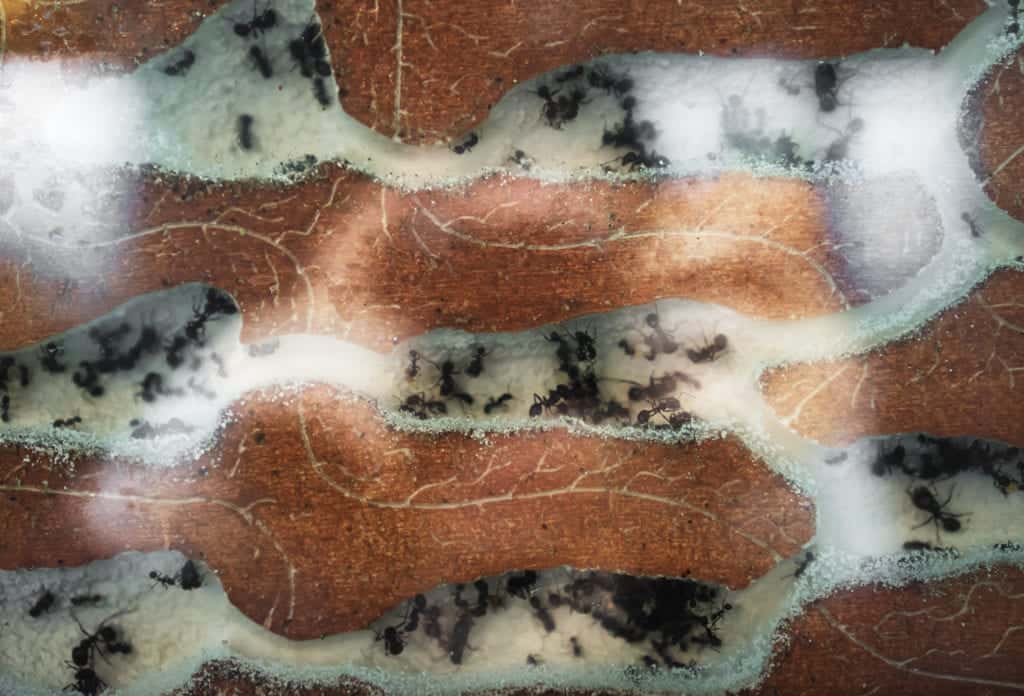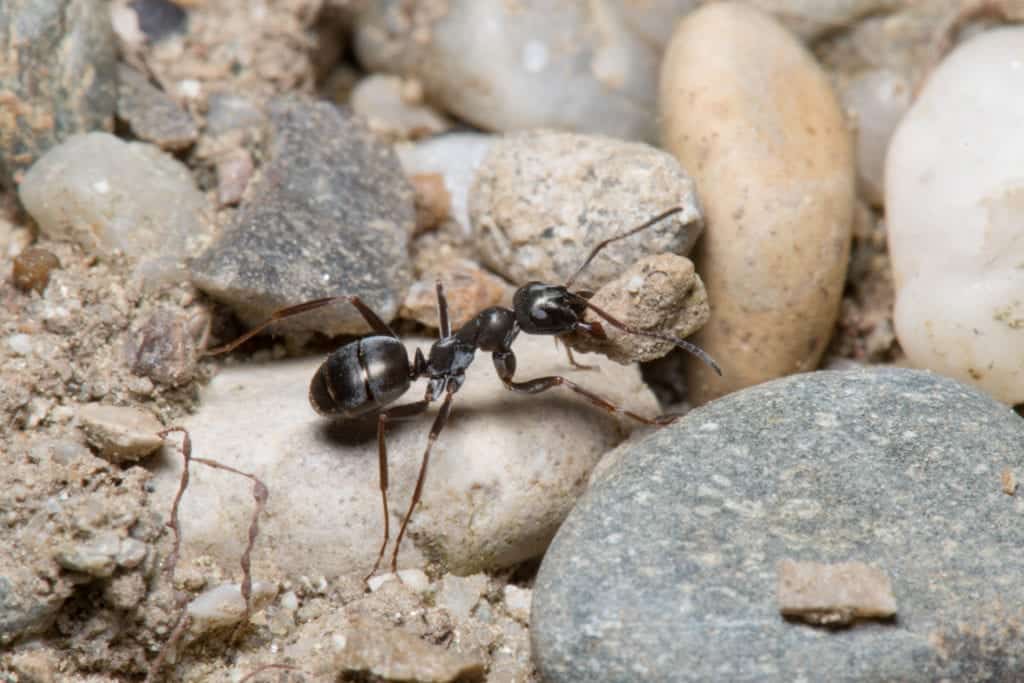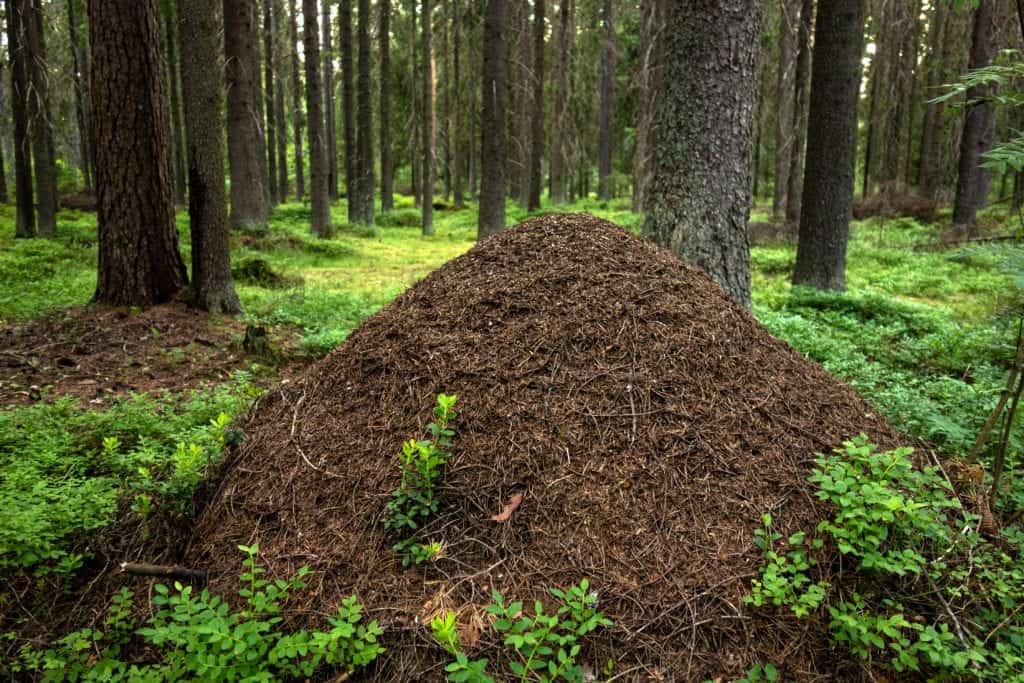Inside the Ant Hill
Inside the Ant Hill
What Are Ant Hills Made Of?
The contents of an ant hill partially depend on the geographic location of the colony and what is available in that area. Typically, they are made up of a combination of soil, sand, clay, and other small pieces of debris that are readily available. It is very rare that pebbles and small rocks are ever included as these are far too heavy for individual ants to move. However, ants will sometimes use small twigs, pine needles and pieces of leaves to help reenforce the structure of the hill as well as its interior tunnels. 
What Do They Actually Look Like?
The interiors of ant hills are a series of complex, interlaced tunnels with various different chambers opening up to provide some larger areas inside the nest. These chambers have a variety of uses including storage areas for food, nurseries for ant larvae and their caretakers, and even areas for ants to simply rest. The exact design of both the interior and exterior of an ant hill depends on the species of ant that has constructed the hill. Some species will create small little hills that lead down into their maze of tunnels, while others will construct tall, resolute towers of soil and clay – somewhat resembling a mini volcano in shape. Likewise, their interiors can vary drastically. For example, one species of ant known as the Western Harvester ant, will create a super long singular tunnel straight down from their hill’s opening. This impressively long tunnel can extend downwards for up to 15 feet. Sometimes, large enough anthills can end up connecting with one another. This requires cooperation between colonies in order for them to construct into one another’s homes and expand the newly merged nest. One of the largest combined nests ever discovered was in Europe and stretched over 3,600 miles. 
How Are They Constructed?
Worker ants construct their subterranean tunnels by first digging, which can be done a few different ways depending on the particular species and what they are digging through. Typically, it is through the manipulation of their jaws that the soil, sand, clay, etc. is loosened. Once the bits of earth are displaced, ants will use their mandibles to then carry the bits of the debris back to the surface, depositing it outside of the nest. This process is painstakingly repeated as the ants excavate new chambers and longer tunnels. 
How Long Do Ant Hills Last?
This is very dependent on the environment in which the hill is built as many environments can put the nest at risk of destruction. In the case that ant hills are in protected areas they can survive for several hundreds of years. When queens pass on, new ones replace them, using the pre-constructed hill and expanding it. 
Citations
Ant Hills (no date) Antkeepers. Available at: https://www.antkeepers.com/facts/ant-colony/ant-hill/ (Accessed: October 2020). A Colony of 250,000 Ants Call the Average Anthill Home – Here’s What is Inside Their Mound (2020) MSN. Available at: https://www.msn.com/en-us/travel/news/a-colony-of-250000-ants-call-the-average-anthill-home-—-heres-what-inside-their-mound/vp-BBZyqv0 (Accessed: October 2020). Sanders, A. (2018) How Does an Ant Build Its Hill?, Sciencing. Available at: https://sciencing.com/ant-build-its-hill-4587980.html (Accessed: October 2020).
Request a Free Quote Today
(We do not share your data with anybody, and only use it for its intended purpose)


